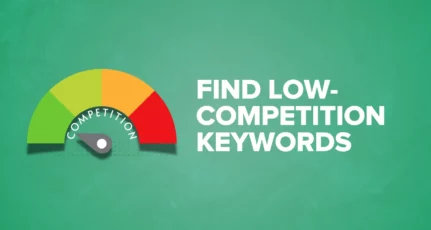
Google has redefined content marketing, and as a blogger or as an SEO, it is important for you to be at the top of it.
A few years back, no matter how good or how bad your posts were, you would end up getting some traffic from search engines. In fact, a few pieces of low-quality content wouldn’t affect your whole entire domain.
However, with the launch of Google Panda, and Google BERT, the landscape of blogging has changed from quantity to quality.
Having thousands of pages indexed in Google will no longer give you great results. Only quality articles with topical relevance are the way forward.
One of the things you should know is that if your blog/website has a few low-quality pieces of content, you might end up losing your site quality value and you will notice less SERP’s ranking.
(FYI, the Google Panda algorithm is now part of the Google algorithm, and there is no way Google is going to give you back your lost traffic. If your site is still missing out on traffic from search engines, it’s time for you to take some serious action and do a complete SEO audit of your site.)
Now, the question is, “How can you find such low-quality pieces of content and work on them to improve my site?”
What is low-quality content (Thin content)?
I have a client, who has more than 5000 blog posts. Despite him having a genuine and useful tech blog, his website was affected by the latest algorithm changes.
There are many reasons why this hard working smart man, lose all his traffic:
- A lot of his old articles were completely outdated, and they needed to be upgraded or deleted.
- The internal linking was not right, and he was missing out on a lot of opportunities to improve internal linking. If this sounds like your situation, use a plugin like Linkwhisper to improve the internal links.
- A lot of broken links
And a few more reasons…
Before we move ahead with how to find and improve low-quality posts, read what Google expects in terms of high-quality content.
This will give you an idea of what search engines want from us and what we can do to improve our content. Low-quality posts, or thin content which doesn’t add much value will not meet these requirements.
Now, there is no handbook for identifying thin content, so I’m going to share my experience of what I did here at ShoutMeLoud and the actions I have taken to improve upon or get rid of my low-quality stuff.
Here are the general steps to follow:
- Finding content with no search engine traffic.
- Finding content with very little search engine traffic.
- Finding duplicate content.
- Finding cannibalized content
- Finding content with low word counts.
- Fixing broken links.
- Checking for plagiarism.
Also, you need to learn and get used to the following things:
- How to do keyword research
- How to fix broken links using the Broken Link Checker plugin
- How to report copied content to Google
- Outbound links for SEO
I know it’s a lot of reading, but when you’re done you will understand SEO much better and you will be able to identify a plan of action.
How to Fix low-quality content issue quickly?
Firstly, let’s get rid of pages that are not adding any value from SEO and business perspective. This way, we can easily lower the number of thin content from the search index.
The first step is to check how Google is indexing your blog. You can login to the Google search console, how many of your blog pages Google has indexed. If you have 2,000 blog posts and you see more than 10,000 indexed pages, certainly something is not right.
If your categories & tags are indexed in Google search, get rid of them. Also, do a quick search in Google with the following search term:
“site:domain.com” (replace “domain.com” with your domain name)
Here you can see all of the pages Google has indexed. Get rid of all pages which don’t add any value to your readers like Tags, Categories, Authors, Paginated pages, etc.
You can add “noindex” tags to these pages with the Yoast SEO plugin, and remove them from the search index using URL removal feature under your Google search console dashboard.

Also, check if any unimportant URL parameter is indexed in Google. You can use the URL parameter handling feature in GWT to get rid of such links.
For me, the “replytocom” parameter was a major issue and fixing it helped me improve my ranking.
How to find thin content based on SEO traffic

Here at ShoutMeLoud, I use Google Analytics to monitor my site traffic and stats. This is one free tool that I highly recommend to every webmaster.
Login to your Google Analytics dashboard > Site Content > All Pages > Show rows = 500 and start browsing. When you see posts with 1-10 visits, make a list of such content.
You might want to increase the time to 3 months so that you can get more accurate results. If you have very few pages/posts, you can use Google Analytics javascript to analyze such pages individually.
Another faster way is to use a tool called SEOTesting. This tool uses your Google search console data to analyze your website and suggests those pages which are not getting any traffic from Google search.

This is perhaps the fastest way to find thin content on your website.
Duplicate content can be the cause of low-quality content:
Duplicate content is one of the most common reasons for a penalty which causes your site to become marked as a low-quality site.
Duplicate content happens for many reasons. One of them is a poor SEO structure.
For finding duplicate content, read this:
Blog posts with a low word count: (Worth checking)
Let me first clear up this myth: Fewer words do not necessarily mean low-quality content.
It all depends on how you are writing content and which topics you are covering. If you cover an important topic with proper keywords/LSI keywords along with outbound links in under 200 words, it could be a good article and rank pretty well.
Though, it’s common knowledge that more words will rank higher.
I try to write every post with a minimum of 1200 words.
Start finding all of the content which has a low word count and analyze their traffic. Identify content that is getting no traffic at all. They are your first enemy. You should start working on optimizing them.
In my case, I found almost 80 articles which have a word count <100; all of them were performing badly.
You can use WP word count plugin to check the word count of posts from the dashboard.

Find and fix Content with broken links:
Let’s assume you have written about a very useful plugin or software a year back and now that link is outdated or gives a 404 error. Do you think such blog posts will add any value to people?
You will notice a higher bounce rate and the “avg. time on page” will go down. Use the Broken Link Checker plugin (on WordPress) to find and fix broken links in WordPress.
Either update the post with a new link or add a notice that the link is no longer working. Manually link to other related posts/software so that readers can find something else that is useful to them.
For other platforms, you can use the SiteBulb or Xenu link checker desktop tool to identify 404 links on your site.
- (Keep in mind, it’s best to judge your content objectively to determine if it adds value or not. Go ahead & read: How to judge high-quality content.)
2 action plans for tackling Low-quality content
Following the above methods, you have successfully identified all thin and low-quality articles on your blog.
Now it’s time to take action.
Here are some methods which I used which worked for me.
1. Remove content
This is for quick fixing your drop in traffic. I have seen this work like a charm for me and for my clients as well.
- Noindex all content that is no longer useful or meaningful.
Maybe years back, those discount coupons or Facebook spam warning messages were useful, but now they are just a piece of junk. Nobody is searching for them and they are just increasing the quantity of low-quality indexed pages on search engines.
I usually take two actions for such content:
- Delete and Noindex: I keep my database size as small as possible and only keep valuable content.
- Noindex only: At times, I will keep some of this content on my blog, but noindex the article. They may have been written well and are in-depth articles, but now such services are no longer working. (A good example is Google Wave.) You may be proud of such articles, so keep them on your blog, but noindex them.
2. Update content
There are many posts that are useful, but poorly written and have a lot of potential for improvement. Work on such posts and only add more content that adds value.
- Check current keywords which are driving traffic (use Google search console or SEMRUSH).
- Perform keyword research (here are some keyword research tools).
- Use Yoast SEO and start optimizing content with your target keyword; use LSI keyword generators and make sure your readability score is good.
If you are one of those fanatics who believe in on-page SEO, make sure you don’t overwhelm Google with keyword stuffing and over optimization.
Add more multimedia such as; slides, videos, and images in a post to make it more engaging. Once you are done updating old content, you should share your updated article on your social networking and bookmarking sites so Google re-crawls your content faster.
Following the above steps will fix many of your SEO and low-quality site issues, but there is still more you can do after that:
- Ensure unique meta title and meta description.
- Check Google search console HTML suggestion for any short/duplicate meta warnings.
- Don’t use too many H2/H3/H4 tags in a post. Follow the heading hierarchy.
- Make sure your post titles are using H1 tags (the most common problem I have seen on many websites).
- You can use the SEMrush tool, which is really awesome for doing a complete SEO audit of your site. I used this a lot when I was fixing my site as it greatly helped in finding common SEO issues.
- Once you remove all useless pieces of content from your blog, make sure to regenerate your sitemap and resubmit it to Google.
- Work on improving social signals to your blog posts (very helpful).
- Build quality links to internal posts using Guest blogging.
If you are the victim of a thin content blog and you are seeing traffic loss after an algo change, it’s time to take action and bring back your lost traffic.
Plagiarism
Apart from thin content, Google does not value duplicate content (as mentioned earlier). You may be suffering because someone is copying your work and publishing it as their own on their own blog.
Now, this is something that Google usually handles pretty well. But again, a search engine is just an algorithm and you can’t rely on search engine bots’ smartness all of the time.
Find all of the copied content from your blog and report it to Google. In my case, I reported almost 2,000 such links and it helped a lot with my ranking.
Here is a video that explains how you can report this content to Google:
Here are some articles that will be helpful:
I hope this tutorial has helped you, but if you still have any queries about identifying low-quality content or how to add more value to a post, do let me know via the comments.
Also, if you find this tutorial useful, don’t forget to share it on Linkedin, Twitter, and Facebook.
Here are a few hand-picked articles for you to read next:
- Long Form Content SEO Ranking Strategy: 11 Must-Follow Tips to Rank
- How To Change Post URL of Already Published Post Without Losing Traffic
- List of Stop Words for SEO






I believe in a simple yet effective approach that can easily influence Google’s search algorithm. What I have understood until now is that working on already published shorter articles that are less than 700 words in length will only create a frustration because the ongoing trend of Google is to give space to the most complete pieces of information. That’s why if a competitor writes ’15 Tips for SEO Success in 2017’ then I will suggest you to make them 25 or even 30 tips. Putting efforts into such kind of techniques will increase the chances of qualifying directly for a given set of keywords. You will also get backlinks from the same resources that link back to your competitors, and your traffic can be modified to any set of keywords in this way.
Ohh Great Harsh, I just found this article while searching on google and this one really help me a lot to increase visibility my site on google search ranking. Once again thank you so much 🙂
Harsh – This article is very useful. do you recommend any tool to identify low quality backlinks?
Thanks a lot for the invaluable article.
My site is OptionsBinaryForex .com
I did the things you recommended but Google declined my reconsideration request. Could you please kindly recommend me what to do?
thanks a lot in advance
Hello Harsh, this article was very useful to me. Thanks for the great info!
I just wanted to share my experience I had with thin content few months ago. One of my websites just suddenly dropped in Google search and had no idea why. The link profile was clean; in fact I didn’t put too much effort in building backlinks. So I checked all the websites that ranked above my and realize that they have huge amount of content. Most of my pages were 300-500 words long, but I had pages that not even reached 300.
Because didn’t want to throw this website away, I decided to rework the content. All content was updated with fresh info and with images also. I had about 40 pages, so it was quite a good amount of work. Finally, after one month, my site started to gain ranking power again and after 3 months got even better rankings than before.
Hi harsh,
If thin content pages are opted for noindex-ing, should those pages be removed from site map too?
Plz answer
@Bharat
It’s suggested not to have those pages in sitemap too.
Hello, Harsh!
This plugin Search Term Tagging 2 didn’t work for me. It hasn’t been updated in over 2 years. It is making problems. Would you share with us another way for finding the posts with no search traffic please!?
I am researching the problem all day long but cannot solve it.
Thank you very much in advance and congrats for the interesting and useful article you wrote!
George
Hi again harsh.
According to my knowledge, when we setup google authorship and publisher for our blog, Google will automatically know that we are the owner of this blog’s post. So when someone else copy your content or part of your content, it will not affect your site’s performance.
@Sanjay
Google authorship is dead now and it’s no more. So that’s out of the equation now!
Great post Harsh! Some new technique dealing with thin content. Specially I like the idea to find out low traffic pages from Google Analytics.
I keep the content on my blog but noindex the article. There are many content which was written in-depth but now such services are not more working. For example: Google wave. Since, such content are your master-piece, you should keep it on your blog but noindex them.
What about a Q&A platform , where each questions asked by someone is actually just 100 or 200 words , but thats what the actual length has to be , its not a post per se, but in wordpress terms its like a post , what do we do in this situation ?
One of my blog posts have no traffic since last 3 month should i delete that post ???
But If we delete, content, 404 errors will occur, which is not good for seo, I am also Having same problem, Please help sir??
Hey Arthi, Chetan,
Use Google URL removal tool to remove the URL.
Hi Harsh , you mention above that Make sure all your posts have Unique meta title and meta description , My blog have post title like ” gadgets name price and features ” , so all the post like this .Is this can produce any issue ?
Thanks for this really useful article, I’m a bit curious about no indexing the already indexed tag and category pages. Will they have an effect since Google has already indexed them ?
i think you have to recrawl them again by using fetch as google. But in my case it’s not doing the work!!!!So I’m still searching for answer.
Just curious, how many articles did you removed? Currently you have 2000+ articles, how many u had before the ‘spring cleaning’?
Ngan
I believe I removed almost 150-300 content… Many of them were outdated..not useful and so on…
I got your point harsh, Just clear thin content from the list. One question which i want to ask you what about the low quality websites that keep on appearing on our website as a commentators’ signature link, and what to do with those commentators which add deep link in their signatures.
Rakesh
Any link going out or on your site..You are responsible..
Specially after Penguin update..I highly recommend to get rid of such links…or make sure your commentator comment with real name and not something like “Best Pet shop” “Buy Inkjet printer” ….
Right, we should go back, rewrite and complement our posts, in any case it will be useful for the blog. About low quality content – I think they put filters based on certain words, typical for spammers, like “best”, “amazing”, “free”, “money”…
Duplicate content can kill your website!
Hi Harsh, thanks for sharing this info! I have a question for you. I’m using blogger and I find out google indexes every archive page of my site… so if I perform site:mysiteurl in google, I find Jen2011 archive page, Feb2011 archive page etc… I have about 40 posts on my site, but google find 127 results, because it indexed every archive page.
Do you thinking it penalize my blog? Have I to find a way to remove archive page to be indexed by google algo?
this is the google query for site:smetteredilavorare.it
http://www.google.it/#hl=it&safe=off&sclient=psy-ab&q=site:smetteredilavorare.it&oq=site:smetteredilavorare.it&gs_l=serp.12…0.0.1.88264.0.0.0.0.0.0.0.0..0.0…0.0…1c.2pHE3QLDbks&pbx=1&bav=on.2,or.r_gc.r_pw.r_cp.r_qf.,cf.osb&fp=e5f78c1fd15b6751&biw=1251&bih=662
thanks!
Francesco
I will put that question back to you:
Do you believe your archive pages are adding any value in search???
In simple word: NO..as it;s good for your blog structure but no use for search engines…Infact you will notice all archive pages will have similar meta title which creates the issue of duplication…!!
You can use Bloggers new Robots.txt file to get rid of such links…!! If you can’t figure out, let me know and I ca write a quick tutorial or make a quick video for the same.. 🙂
very useful tut although my site didnt get hit by the recent algo update as it is relatively new, i will follow these rules and lookout if i have any low quality content and remove them!
Harsh, I’m we can also find posts with low wordcount using wordstats plugin. I believe I’ve sent you the link already some days ago.
I tried that plugin on CAG but seems like due to Cron file issue it didn’t worked…I will give it another shot on some other blog .. 🙂